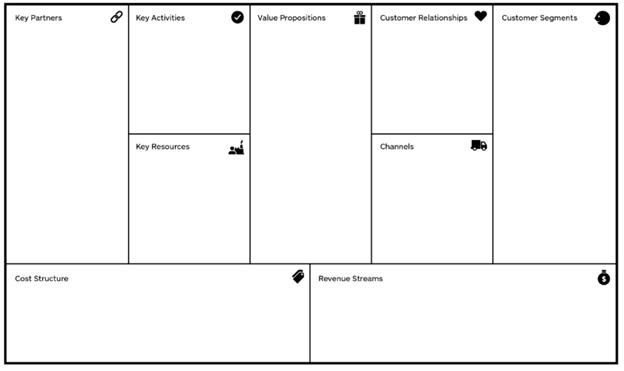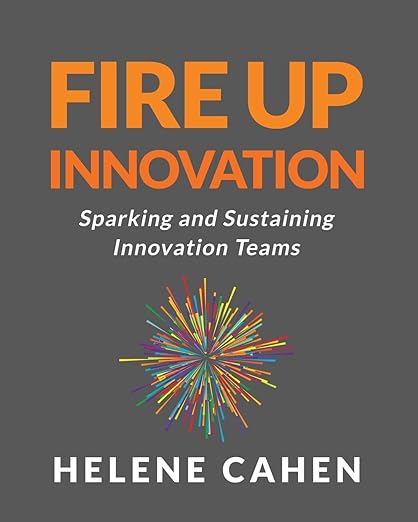The Enterprise Model Canvas (BMC) is a priceless instrument for firms of all sizes, and I found it considerably associated to startups and small firms. It is based on the Enterprise Model Period e book by Osterwalder and Pigneur, revealed in 2010. I’ve reviewed a thousand Enterprise Model Canvases (BMC), and every dialog has stroke a chord in my memory of the simplicity and depth of the instrument.
As you are working in a startup environment, the BMC can help you by
- Providing a structured framework for keen about and planning the enterprise.
- Encouraging a deep understanding of the purpose market and purchaser desires.
- Highlighting potential risks and allowing for proactive mitigation.
- Promoting collaboration and alignment amongst workforce members and getting buy-in from utterly completely different stakeholders
This seemingly straightforward instrument provides a holistic view of the enterprise. It ensures that the workforce will take into consideration all important options of your small enterprise (previous the companies or merchandise ideas) and their interconnectedness. This helps break down silos and encourages the workforce to proactively concentrate on and get alignment on important options of the enterprise (that left unaddressed usually tend to create challenges later), along with share that imaginative and prescient with inside and exterior stakeholders.
What’s a BMC?
The Enterprise Model Canvas (BMC) is a visual instrument that allows firms to know and share their enterprise fashions. It consists of 9 containers representing utterly completely different options of the enterprise, along with purchaser segments, value propositions, channels, purchaser relationships, key actions, necessary sources, key companions, value building, and earnings streams. Whereas seemingly straightforward, the BMC provides insights into the interconnectedness of varied elements of a enterprise.
The 9 areas of focus are:
- Purchaser Segments: This area focuses on understanding the patrons and their “jobs to be completed” (as outlined by Tony Ulwick). Going previous a straightforward label (i.e., “small espresso retailers”) and understanding the roles to be completed, desires, and needs (for example, “small espresso firms that need to serve high-quality fancy espresso drinks shortly”) will make a distinction in how one can then current value propositions that deal with these jobs.
- Value Propositions: These signify the distinctive value or benefits a product/service or experience affords each purchaser part. This goes previous merely itemizing choices and instead focuses on what points the enterprise solves for its prospects and the way in which it makes their lives greater (for example, for a espresso retailer proprietor, it is likely to be “custom-made drinks in 20 seconds” or “make getting a espresso drink actually really feel like an expensive experience”).
- Channels: This half outlines how a enterprise reaches and communicates with its purchaser segments to ship its value propositions. This consists of promoting and distribution channels, along with communication methods.
- Purchaser Relationships: These describe the relationships a enterprise establishes with its purchaser segments. These can differ from non-public and direct interactions to automated, platform-based, or self-service fashions.
- Key Actions: Lists a really highly effective actions a enterprise ought to do to make its enterprise model work. This consists of what the workforce or group should do to create, ship, and help its value propositions.
- Key Property: Identifies basically essentially the most important property that help the enterprise, along with bodily, psychological, human, and financial sources.
- Key Partnerships: This half lists the group of suppliers and companions that contribute to the enterprise model. This can seemingly embrace strategic alliances, joint ventures, and outsourcing preparations.
- Worth Development: Describes all the costs incurred to perform the enterprise model.
- Revenue Streams: Outlines how a enterprise generates earnings from each purchaser part, product, or service type.
Free On-line Skills Teaching: Larger Funds, Larger Cash Stream
Benefits of Using the BMC
Creating, discussing, and updating your BMC generally when inside or exterior changes happen provides an important roadmap on your small enterprise.
The BMC Clarifies and Aligns
The BMC brings clarification and alignment spherical a enterprise. As teams work by the use of the canvas, they’ve to contemplate the interconnectivity of all elements of the enterprise. It provides workforce members with an understanding of varied areas of the company by which they don’t seem to be instantly involved. For example, a product supervisor might have further full particulars about promoting or finance. Ideally, a multi-functional workforce will co-create the BMC, working collectively to fill out the numerous sections and concentrate on their views. This shared enterprise imaginative and prescient then helps teams work further cohesively and efficiently. Equally, sharing the canvas with outside stakeholders, financial companions, or distributors can help get buy-in and better understand your small enterprise and needs.
The BMC is a Versatile Software program
The canvas can signify the enterprise at utterly completely different ranges, from a single product/service or a selected part to a portfolio of merchandise/firms or the complete group. Like a picture, chances are you’ll zoom in or out or think about express areas. The extent of ingredient included may be adjusted, along with further knowledge on the workforce diploma and a broader view for administration or outside stakeholders. It’s possible you’ll as properly create a group of canvases representing alternative routes to view your small enterprise. This flexibility makes the BMC adaptable to quite a few situations.

We earn a payment for many who make a purchase order order, at no further value to you.
The BMC is an Wonderful Innovation Software program
Using the BMC to consider utterly completely different conditions or innovation potentialities provides an understanding of the have an effect on of fixing a selected canvas area on the complete enterprise. As an illustration, together with a model new part of consumers might impact your value propositions, channels, and companions or require a definite financial model. This helps anticipate the ripple outcomes of changes and make further educated choices. For example, in a rapidly altering technological panorama, such as a result of the rise of AI, teams can use the BMC to consider how AI might have an effect on utterly completely different options of the enterprise. They might take into consideration whether or not or not AI might carry positive outsourced actions in-house, the way in which it might presumably have an effect on earnings streams and value building, and the way in which it is likely to be used to boost purchaser segmentation or current bigger customization. It’s essential to don’t forget that innovation can occur in any enterprise area, not merely the value proposition areas. As an illustration, innovation might be inside the pricing building, channels, and partnerships. As a startup, you may revenue from innovating in areas previous your product or firms, and the canvas can help you envision these potentialities.
We suggest experimenting with the Enterprise Model Canvas alongside together with your workforce. Within the occasion you utilize whiteboards, every Mural and Muro current BMC templates. Spending an hour or two co-creating one (or further) canvases with key workforce members is extra prone to carry to the forefront some important factors, help the workforce understand options of the enterprise they may not be acquainted with, create a model new appreciation for the utterly completely different options of the enterprise and a higher understanding how all options and components of the enterprise are interconnected. In an environment evolving shortly, revisiting the BMC generally (along with creating BMCs to your main rivals) will carry factors which is able to need new options and help a shared imaginative and prescient and alignment.
I hope chances are you’ll try the BMC and add it to your 2025 toolbox.
Helene Cahen is the author of “Hearth Up Innovation: Sparking and Sustaining Innovation Teams.”
Image by FatCamera from Getty Photographs Signature by Canva.com



